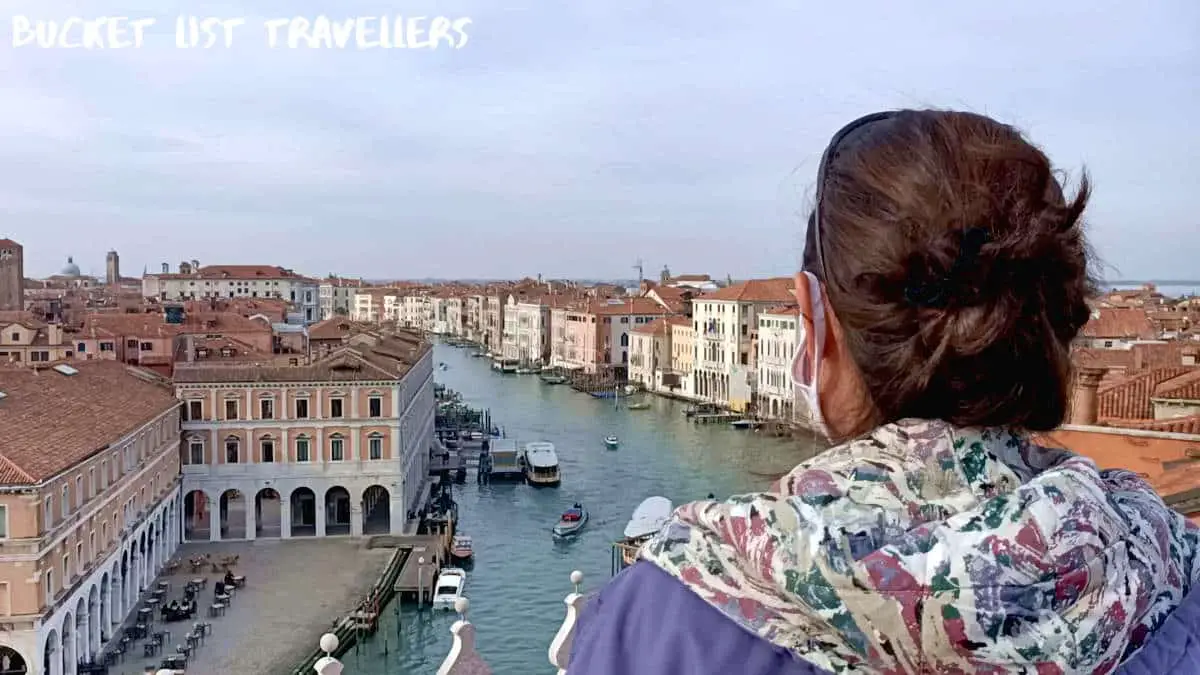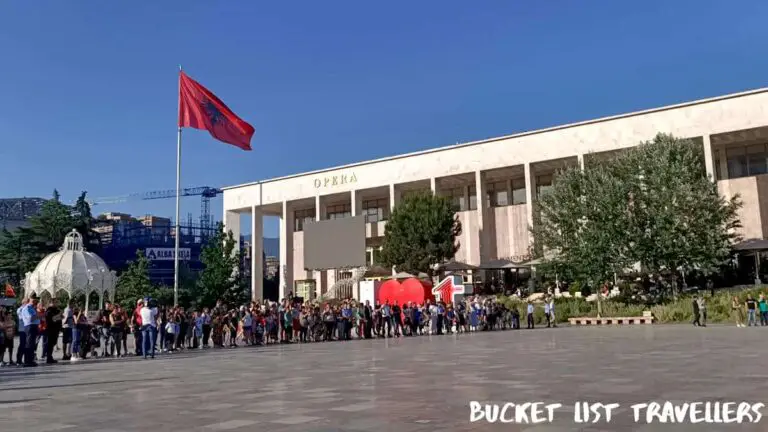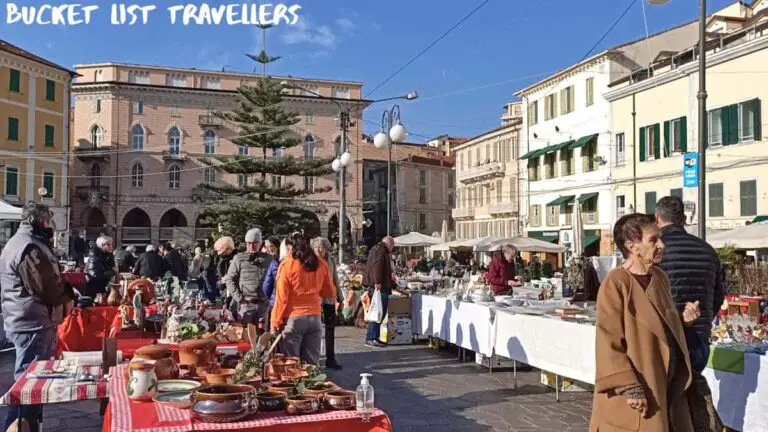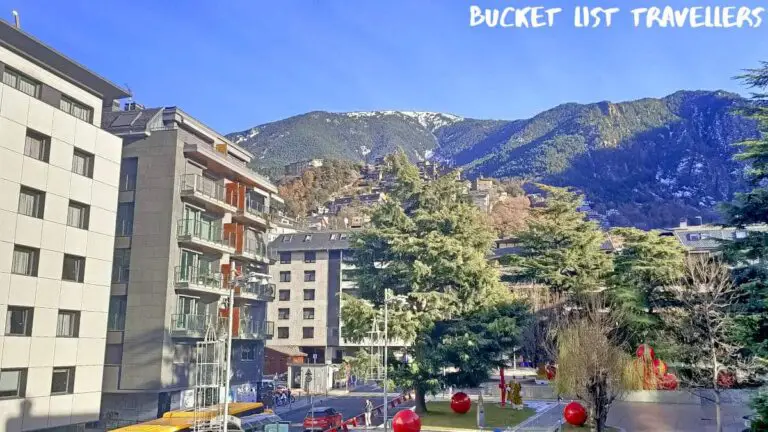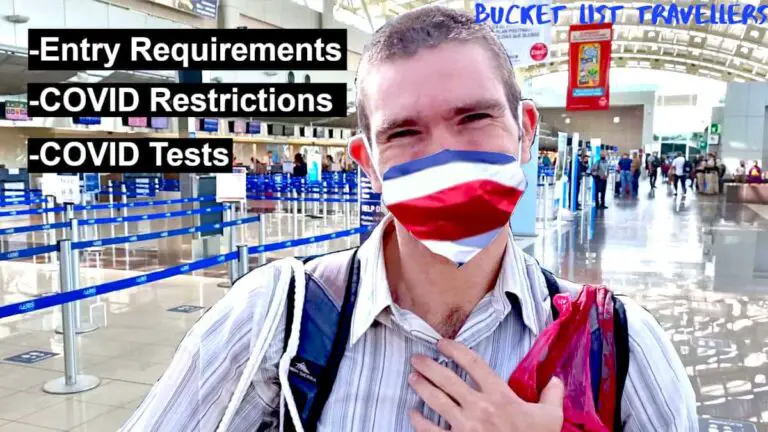Fancy an Italian vaccation in 2022? Travel during Covid can be confusing with ever changing Italy Travel Requirements. This Italy Travel Blog will answer all your questions about how to travel to Italy during Covid. Information contained in this guide reflect the most recent changes to the Italy Covid requirements which are effective from 1 May 2022. This Italy travel guide covers:
- Italy’s definition of “fully vaccinated” for Covid
- What is the Green Pass and a Super Green Pass in Italy
- Entry requirements to Italy
- Covid protocols in Italy
- How to get a Covid test in Italy
This blog will be very useful for anyone considering visiting Italy during Covid.
Why you should go to Italy
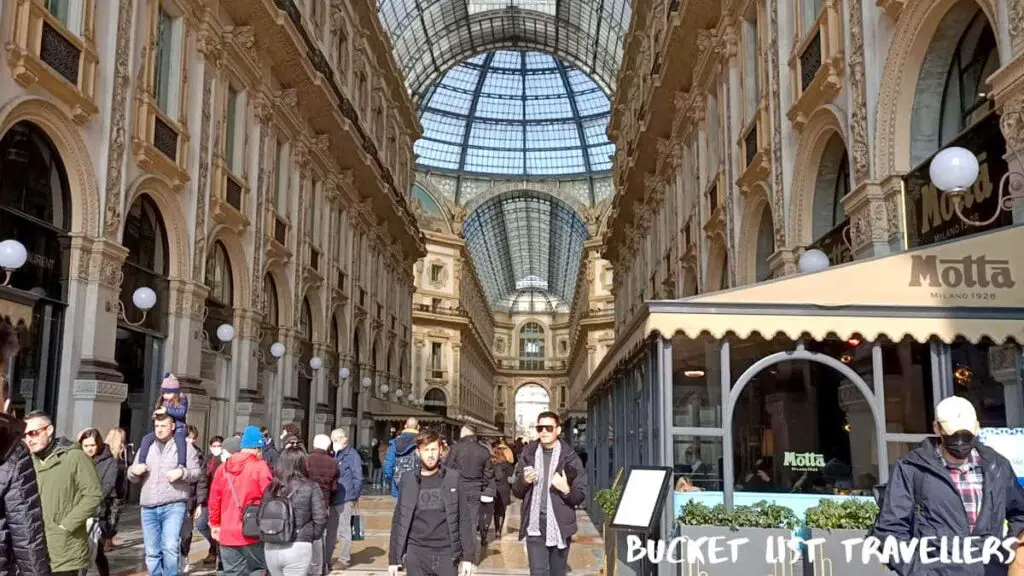
Italy is a land of food, art and world famous landmarks. This European country is set on the Mediterranean and shares borders with France, Switzerland, Austria, and Slovenia. The country has a strong tourism industry, with a wide range of attractions on offer. Food lovers will find gastronomic delights all throughout the country. Those after romance would enjoy Venice, Florence as well as the Amalfi Coast. If you enjoy culture and history, consider a visit to Rome, Verona or Naples. And for fashionistas, Milan is a must!
What is Italy’s definition of “fully vaccinated” for Covid
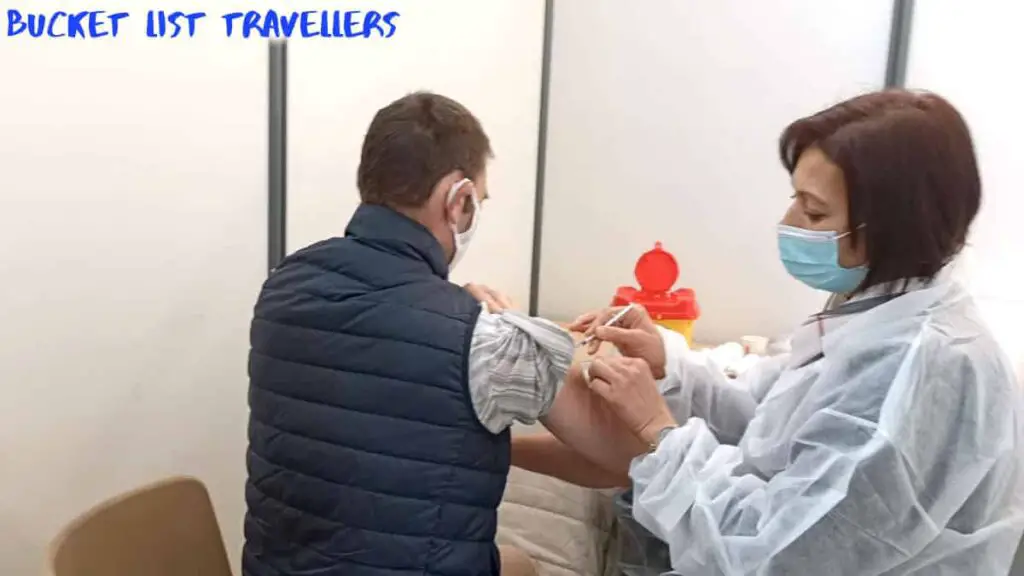
Italy considers you fully vaccinated 14 days after completion of the primary vaccination schedule:
- Two injections for double injection Covid vaccines (Pfizer/BioNtech Comirnaty, Moderna, Vaxzevria, Nuvaxovid/Novavax, Covishield, Fiocruz, R-Covi)
- OR one injection of a single injection Covid vaccine (Johnson & Johnson/Jansen)
In addition to this, it should be noted that Italy currently requires you to have had a booster shot 9 months after your primary schedule in order to be considered fully vaccinated against Covid for the purposes or entry into the country. However in order to access activities and services in Italy, the primary schedule is only valid for 6 months. After this time you require the booster dose in order to extend the validity of your Green Pass.
Please note that only vaccination certificates in Italian, English, French, Spanish or German are valid in Italy. If your vaccination certificate is in another language, it must be accompanied by a sworn translation into Italian.
What is a Green Pass in Italy?
A Green Pass (also known as a Basic Green Pass) is the Italian name for the EU Digital Covid Certificate. It is a document that is used to show your Covid vaccination, recovery or tested status. A Green Pass or equivalent must be shown in order to enter Italy. This applies to all people aged 6 or older. It was previously also required to access certain activities and services. However the green pass requirements within Italy have been removed as of 1 May 2022.
The Green Pass provides proof of one of the following:
- Vaccination with the primary series of Covid vaccinations (valid for 9 months for entry to Italy and 6 months for accessing certain activities and services within Italy) or the booster dose (no predefined validity limit) OR
- recovery from Covid (valid from 180 days from the positive swab test) OR
- recovery from Covid after administration of at least one dose of the Covid vaccine OR
- negative Covid rapid antigen test taken 48 hours before entry to Italy OR
- negative Covid PCR molecular swab test taken 72 hours before entry to Italy
This certification given by Italy and other EU countries is known as the Green Pass. Italy also accepts the equivalent documentation from other countries. The documentation must be in either Italian, English, French, Spanish or German. Otherwise it must be accompanied by a sworn translation into Italian.
What is a Super Green Pass in Italy?
A Super Green Pass is the highest level of Covid certification in Italy. It is one step above the Green Pass (also known as the Basic Green Pass). The Super Green Pass is a document that is used to show your Covid vaccination or recovery.
- Vaccination with the primary series of Covid vaccinations (valid for 6 months) or the booster dose (no predefined validity limit) OR
- recovery from Covid (valid from 180 days from the positive swab test) OR
- recovery from Covid after administration of at least one dose of the Covid vaccine
From 1 May 2022 the Super Green Pass is only required to access hospitals and nursing homes in Italy. This requirement will remain in force until at least 31 December 2022.
Italy entry requirements
Passenger Locator Form for Entry to Italy
All travellers must fill out a Passenger Locator Form prior to entering Italy. The Passenger Locator Form can be found here: https://app.euplf.eu/#/
Make sure you have a copy of the completed form in either digital or printed format to show if asked at check-in at the airport or at entry to Italy.
Covid-19 Green Pass or equivalent for Entry to Italy
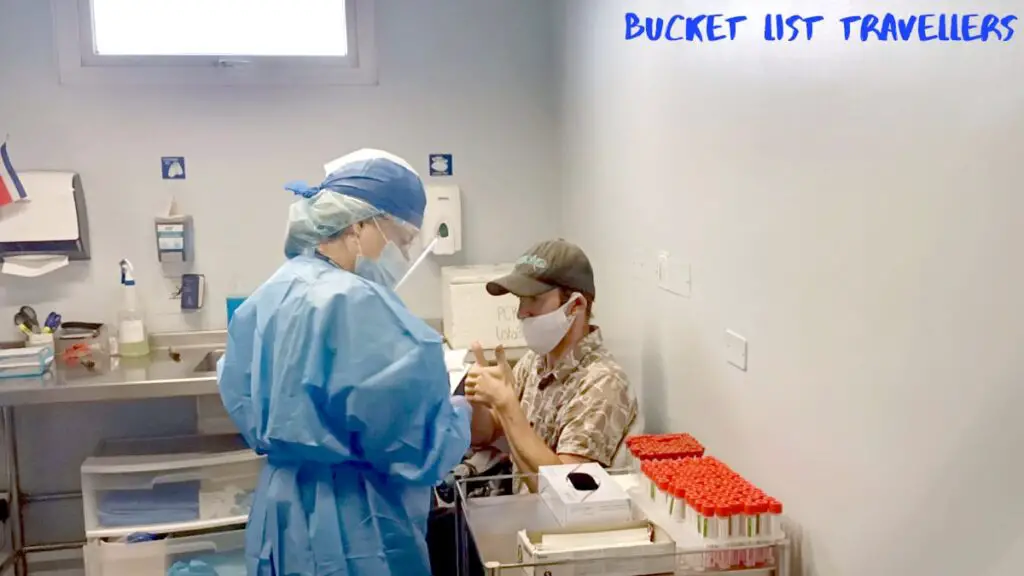
All travellers aged 6 and older must have a Green Pass or equivalent for entry to Italy. A green pass is documentary proof one of the following:
- Vaccination with the primary series of Covid vaccinations (valid for 9 months) or the booster dose (no predefined validity limit) OR
- recovery from Covid (valid from 180 days from the positive swab test) OR
- recovery from Covid after administration of at least one dose of the Covid vaccine OR
- negative Covid rapid antigen test taken 48 hours before entry to Italy OR
- negative Covid PCR molecular swab test taken 72 hours before entry to Italy
The above must be in either Italian, English, French, Spanish or German. Alternatively it must be accompanied by a sworn translation into Italian.
For more information, see this website.
Entry to Italy without a Green Certificate
If you do not provide a Covid Green Certificate or equivalent on entry to Italy, you will need to quarantine for 5 days at the address provided on your Passenger Locator Form. Additionally, you must take an antigen or molecular test at the end of the quarantine period.
Other Italy entry requirements
The other requirements for entering Italy are unchanged from normal times.
- Visas are required for your specific country to enter Italy.
- Proof of leaving Italy is required. This can be in the form of a bus ticket or an air ticket for example. (However we were not asked for this when we entered Italy overland from France).
- There are additional requirements for permanent and temporary residents of Italy.
Getting to Italy
Italy travel guide: arriving overland
Land border crossings for Italy
Italy has land borders with 4 countries:
- France (we have done this border crossing)
- Switzerland
- Austria
- Slovenia (we have done this border crossing)
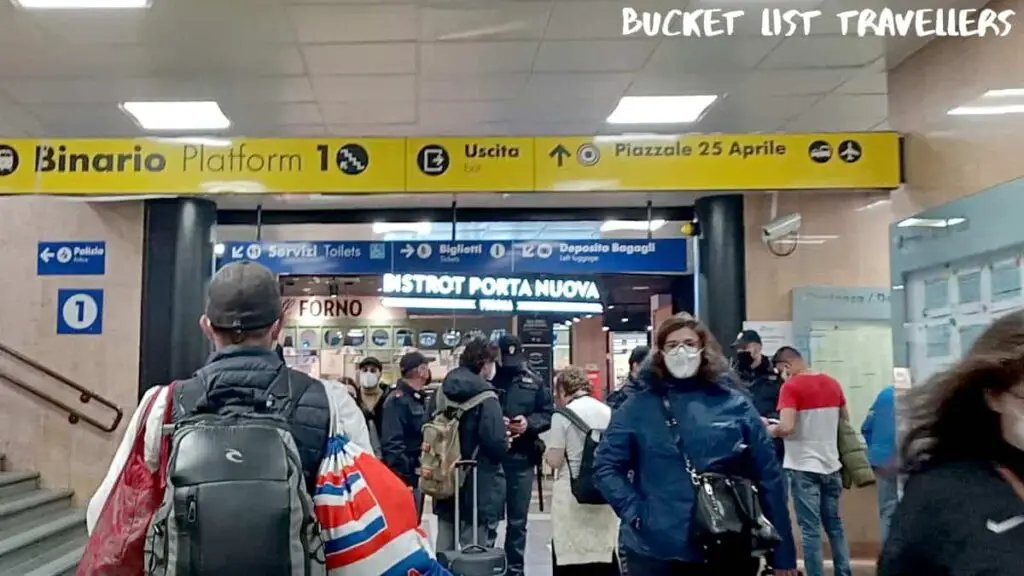
Italy land border transport
The main transport options for travelling overland to Italy are:
- Private vehicle
- Private transport operator
- Train
- Intercity bus
- Local bus
Italy travel guide: arriving by air
There are 9 major international airports in Italy. These include:
- Rome Fiumicino Airport (Airport code FCO). This is Italy’s primary airport and also the 11th busiest airport in Europe. Around 44 million passengers pass through this airport each year. It is located in Rome.
- Milan Malpensa Airport (Airport code MXP).
- Milan Bergamo Airport (Airport code BGY).
- Venice Airport (Airport code VCE).
- Naples Airport (Airport code NAP).
The national airline of Italy is ITA Airways (Italia Trasporto Aereo).
Italy travel guide: arriving by sea
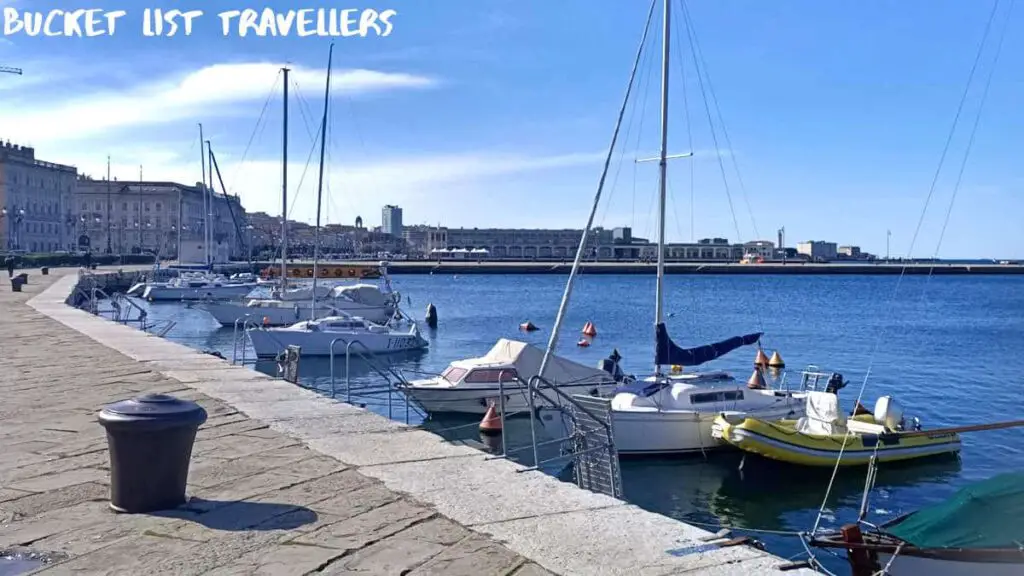
There isa total of 311 seaports in Italy, including 14 major seaorts. These include the ports of:
- Trieste
- Genoa
- Livorno
- Cagliari
- Gioia Tauro
- Ravenna
- Venice
- Messina
- Augusta
- Taranto
Our experience of entry to Italy
We caught a train from Nice France to Ventimiglia Italy. We filled out the Passenger Locator Form before our journey, but no-one actually checked any of our documents at the border. Furthermore we didn’t see any border control officials when we crossed the border.
Covid mandates in Italy 2022
Mask mandates in Italy
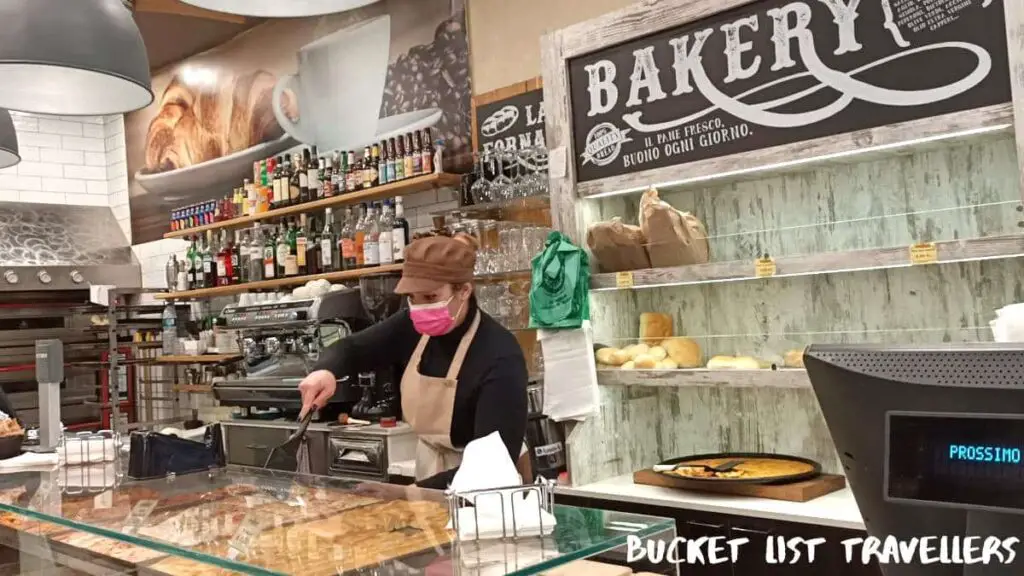
Italy requires masks to be worn on public transport as well as in some indoor settings such as in hospitals and nursing homes, cinemas and theatres, at concerts and indoor sporting events and in schools and universities. These mask requirements in Italy will remain in force until at least 15 June 2022.
Masks must be the FFP2 style masks. N95 and KN95 masks are also accepted.
The following people are excluded from mask requirements:
- children under the age of 6
- people with a disability or medical condition that prevents them from wearing a mask as well as people that must communicate with a disabled person
- individuals engaged in athletic activities
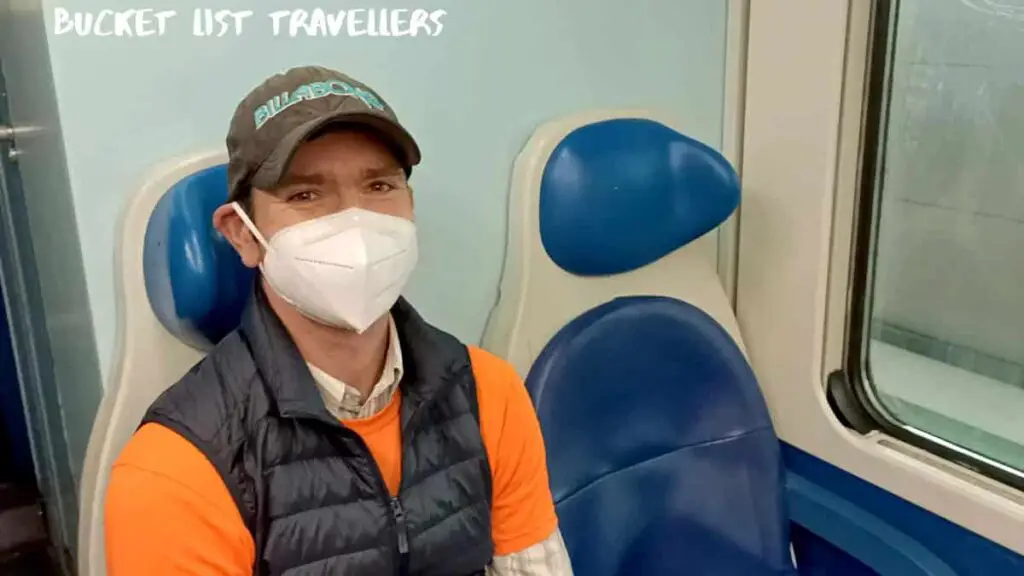
Covid vaccine mandates in Italy
As at the beginning of 2022 there is a requirement to have “Super Green Pass” which confirms that you have had the Covid vaccine or recovered from Covid in order to enter a lot of venues. This includes certain commercial venues such as some restaurants, hotels, tours and other non-essential businesses.
Getting a Covid test in Italy
How to find a Covid Testing Station in Italy
You will probably need a Covid test to leave Italy. Fortunately, there are plenty private clinics offering Covid testing around Italy. You can also get Covid tests at airports in Italy.
What Covid tests are available in Italy?
Antigen, PCR and Rapid PCR Covid tests are available in Italy.
How much do Covid tests cost in Italy?
Expect to pay around the following amounts for Covid tests in Italy:
- Antigen test – 20-30 euro
- PCR test – 55-75 euro
- Rapid PCR test – 100 euro
Italian pharmacies and supermarkets also sell Covid self testing kits, however these may not be suitable for the purposes of travel.
Do I need an appointment to get a Covid test in Italy?
Yes, we recommend that you book an appointment for a Covid test in Italy. However there are Red Cross centres in Milan and Rome that do not require appointments. Additionally, you do not require an appointment if getting a Covid test at an airport in Italy, however you can pre-register to save time filling out the forms at the airport.
What information does a Covid test in Italy need to have?
When you get your results, make sure that your test results include your name as per your passport, the test type and the time of collection. Otherwise your airline may not validate your results.
What happens if I test positive for Covid while in Italy?
The Covid hotline in Italy is 1500. This is a toll-free phone number which is available 24 hours a day. If you suspect you have Covid, call this number and they will be able to assist you.
If you test positive for COVID-19 while in Italy, you must quarantine for 10-21 days. Furthermore, if you are symptomatic, you will need to be without symptoms for at least 3 days after which an antigenic or molecular test must be performed. If you then test negative you may leave quarantine.
How long to spend in Italy
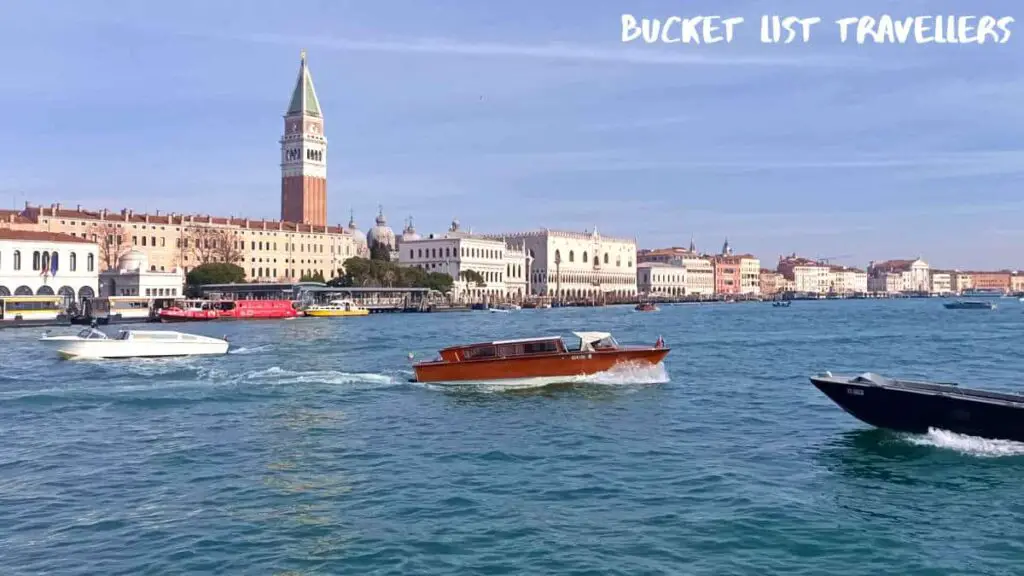
Italy is such a beautiful country with so much to offer. It is a country you could easily return to again and again and never run out of things to do and see. We’d recommend devoting as much time as you have to experiencing all that Italy has to offer. However if you are short on time, 2 weeks will allow you to get a taste for some of the highlights of this amazing country.
Where to stay when visiting Italy
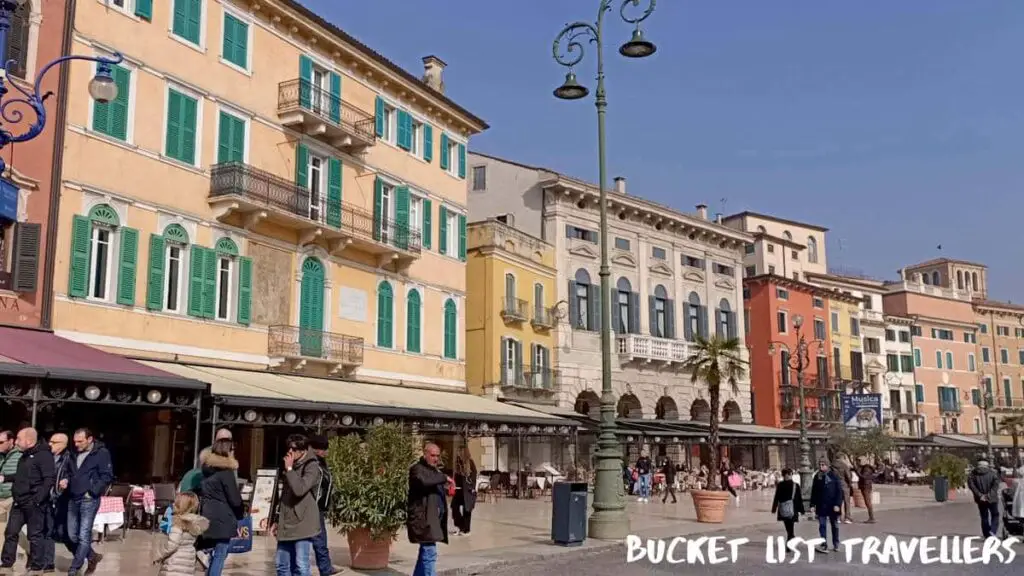
Italy has a wide range of destinations to choose from and is perfect for any type of vacation. Food lovers will find gastronomic delights all throughout the country. Those after romance would enjoy Venice, Florence and the Amalfi Coast. If you enjoy culture and history, consider a visit to Rome, Verona or Naples. And for fashionistas, Milan is a must!
Popular areas to visit in Italy include:
- Cities – Rome, Florence, Venice, Milan, Bologna, Naples, Verona, Genoa, Trieste, Pisa, Turin, Palermo, Cagliari, Ravenna, Siena
- Beach regions – Sardinia, Amalfi, Positano, Rimini, Sorrento, Sicily, Capri
- Mountain areas – the Italian Alps, the Apennines, the Dolomites
- National Parks – Italy is home to 25 national parks. These include Cinque Terre National Park, Vesuvius National Park, Parco Nazionale delle Dolomiti Bellunesi.
- Volcanoes – Vesuvius, Mount Etna, Stromboli
- Wine regions – Piedmont, Tuscany, Sicily, Veneto, Emilia-Romagna, Sardinia, Umbria, Prosecco, Lombardy
- UNESCO sites – the Historic Centres of Rome, Florence, Naples, Siena, and Urbino, Venice and its Lagoon, the City of Verona, the Archaeological Areas of Pompei, Herculaneum and Torre Annunziata, the Amalfi Coast, Cinque Terre, Piazza del Duomo in Pisa, The Last Supper in Milan
Italy has a wide range of accommodation options available to suit all budgets. These include plenty of Airbnbs, hostels, hotels as well as luxury resorts.

Is Italy safe?
Italy travel guide: Safety in Italy
We travelled through Italy for two weeks and found the country to be very safe. As with any country, there are good areas and bad areas. Watch out for pickpockets and bag snatchers particularly in Rome, Venice, Florence, Milan and Naples. Beware that bag snatchers can even use cars or scooters for drive by bag snatching. Milan also has an issue with counterfeiters selling fake goods. Additionally, Naples and Florence have a reputation for scams. Theft is the most common crime in Italy, so never leave your belongings unattended. Be extra vigilant in crowds and on public transport. Also, make sure no-one is watching whenever you are entering pin codes and never lose sight of your credit card when making a purchase.
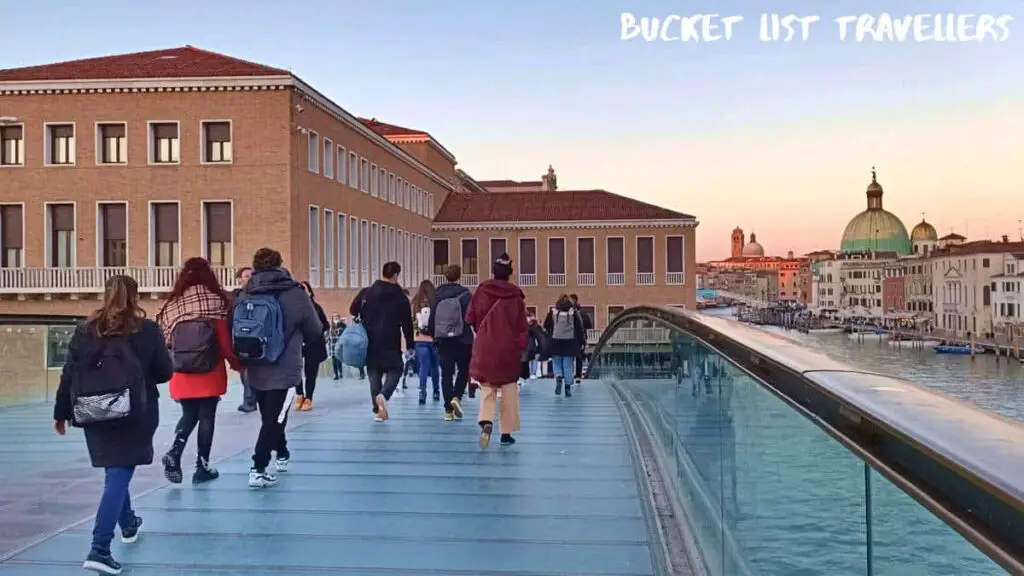
General safety considerations in Italy
Other general safety considerations for travel in Italy:
- Drinking water – Tap water in Italy is safe to drink almost everywhere. However some very rural areas may not have water that’s safe to drink. If you see a sign that says “acqua non potabile” the water is not safe to drink.
- Nightlife – never leave your drink unattended as there have been reports of spiked drinks in bars and nightclubs.
- Mosquitoes – the tiger mosquito has been in Italy since 1991. It spreads diseases such as Zika, dengue and chikunguya.
- Altitude sickness – Italy has areas of high altitude, which can lead to altitude sickness. Allow sufficient time to acclimatise if visiting high altitude areas. If you experience any signs of altitude sickness (headache, nausea or vomiting, dizziness, tiredness, loss of appetite or shortness of breath) get help immediately.
- Road safety – Italy has one of the highest road death tolls in Europe, due to driver behaviour as well as road conditions. Robberies from cars are not uncommon, particularly around gas stations. Always lock your vehicle, roll up windows and do not leave valuables unattended in your vehicle. Ignore anyone who tries to flag you down – even if they are telling you you have a flat tyre. Carjackings are a risk in some parts of the country such as Sicily.
- Taxis – only use official taxis which have a taxi sign on the roof and don’t take a ride from a driver that approaches you.
- Water safety – take care when swimming as currents and waves may be stronger than you expect.
- Sun safety – Exposure to the sun can have adverse short-term and long-term effects on the skin, eyes and immune system. Wear sun protection such as sunscreen, a hat and sunglasses.
As with any destination, take all of your normal safety precautions.
Italy Blogs
You can find our Italy travel blogs below.

19 Best FREE Things To Do in Trieste Italy (with map)
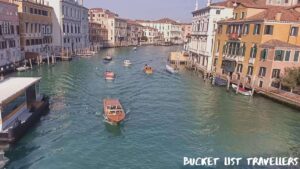
14 Best FREE Things To Do in Venice Italy (with map)

15 Best FREE Things To Do in Verona Italy (with map)
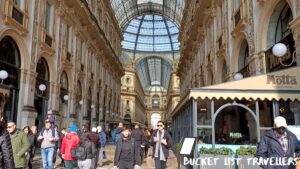
17 Best FREE Things To Do in Milan Italy (with map)

15 Best FREE Things To Do in Genoa Italy (with map)
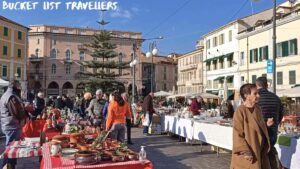
12 Best FREE Things To Do in Sanremo Italy (with map)
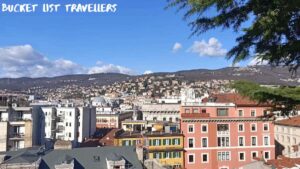
Trieste Destination Guide (2024): What You Need to Know
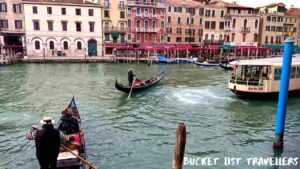
Venice Destination Guide (2024): What You Need to Know
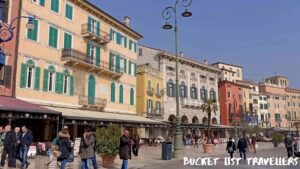
Verona Destination Guide (2024): What You Need to Know

Milan Destination Guide (2024): What You Need to Know
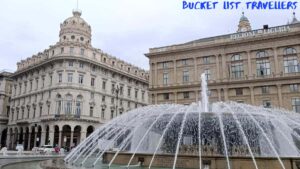
Genoa Destination Guide (2024): What You Need to Know
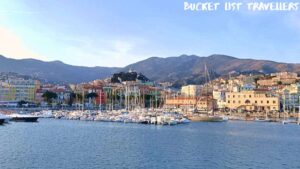
Sanremo Destination Guide (2024): What You Need to Know
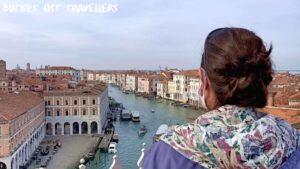
How to Travel to Italy during Covid

15 Most Surprising Things About Visiting Italy!
Affiliate Links
This website contains affiliate links, which means we may earn a commission on any purchases at no additional cost to you. Your support helps us continue our travels and make more travel blogs and travel videos, thank you!
